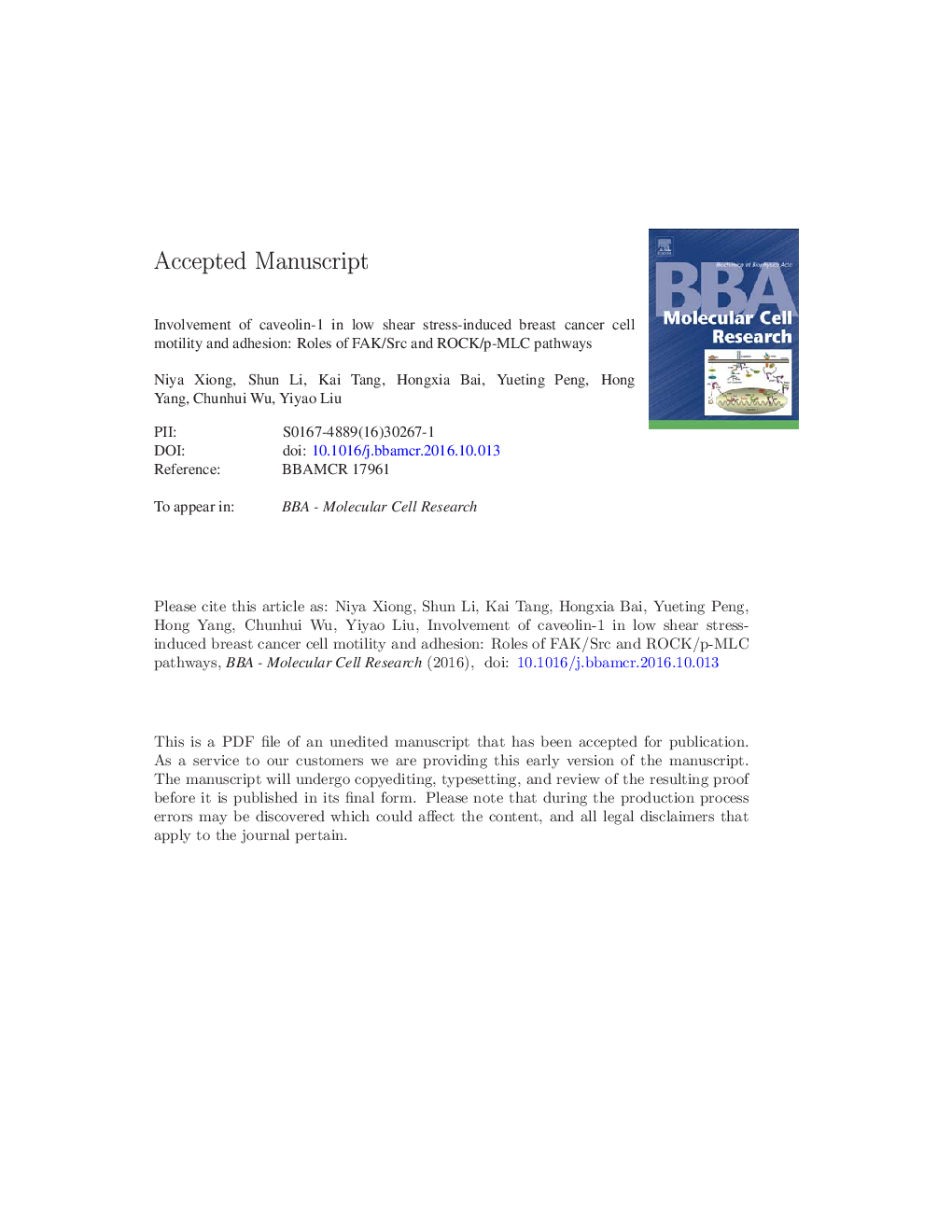| Article ID | Journal | Published Year | Pages | File Type |
|---|---|---|---|---|
| 5508719 | Biochimica et Biophysica Acta (BBA) - Molecular Cell Research | 2017 | 40 Pages |
Abstract
Tumor cells translocating to distant sites are subjected to hemodynamic shear forces during their passage in the blood vessels. Low shear stress (LSS) plays a critical role in the regulation of various aspects of tumor cells functions, including motility and adhesion. Beyond its structural role, caveolin-1 (Cav-1), the important component of caveolae, represents a modulator of several cancer-associated functions as tumor progression and metastasis. However, the role of Cav-1 in regulating tumor cells response to shear stress remains poorly explored. Here, we characterized the role of LSS and Cav-1 in mediating cell motility and adhesion on human breast carcinoma MDA-MB-231 cells. We first showed that LSS exposure promoted cell polarity and focal adhesion (FA) dynamics, thus indicating elevated cell migration. Silencing of Cav-1 leaded to a significantly lower formation of stress fibers. However, LSS exposure was able to rescue it via the alteration of actin-associated proteins expression, including ROCK, p-MLC, cofilin and filamin A. Time-lapse migration assay indicated that Cav-1 expression fostered MDA-MB-231 cells motility and LSS triggered cells to rapidly generate new lamellipodia. Furthermore, Cav-1 and LSS significantly influenced cell adhesion. Taken together, our findings provide insights into mechanisms underlying LSS triggered events mediated by downstream Cav-1, including FAK/Src and ROCK/p-MLC pathways, involved in the reorganization of the cytoskeleton, cell motility, FA dynamics and breast cancer cell adhesion.
Related Topics
Life Sciences
Biochemistry, Genetics and Molecular Biology
Biochemistry
Authors
Niya Xiong, Shun Li, Kai Tang, Hongxia Bai, Yueting Peng, Hong Yang, Chunhui Wu, Yiyao Liu,
